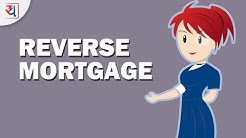Contents
What Is A Reverse Mortgage Loan But the accuracy stops there. Half-truth #1: Reverse mortgages are high-interest-rate loans The article said reverse mortgage is a “high interest rate” loan. Are there expenses with reverse mortgages?.
The jumbo reverse mortgage provides better loan-to-value ratios, which means borrowers receive more money as a percentage of their home value. In most cases, it no longer takes a home value of $1,500,000 for the loan to make sense. The first step to determining combined loan-to-value ratio is to know the appraised value of a home.
 The maximum loan amount on a traditional HECM reverse mortgage used to be as low as $200,000. In 2009, Congress passed legislation that increased Reverse Mortgage loan limits to $625,500. The loan limit was increased to $636,150 on January 1, 2017. (Most recently, it was raised to $726,525, effective January 1, 2019.)
The maximum loan amount on a traditional HECM reverse mortgage used to be as low as $200,000. In 2009, Congress passed legislation that increased Reverse Mortgage loan limits to $625,500. The loan limit was increased to $636,150 on January 1, 2017. (Most recently, it was raised to $726,525, effective January 1, 2019.)
Lenders will provide mortgages based on many factors, one being the loan-to-value ratio, or LTV, of the property.The type of property, whether owner-occupied or investment, will usually determine different maximum allowable LTV ratios. This ratio is expressed as a percentage and is derived by dividing the mortgage amount by the lesser of the selling price or appraised value.
Ratio loan mortgage reverse – Honttu – The loan-to-value ratio is defined as a lending risk assessment ratio that financial institutions and other lenders examine before approving a mortgage. more federal housing administration loan. As home equity conversion mortgages. costs are raised to 2% of the home’s value, up from 0.5%.
Reverse Mortgage Purchase Down Payment reverse mortgage amortization schedule excel Reverse Mortgage Amortization Table – Alexmelnichuk.com – A reverse mortgage is a lifetime mortgage. It is a loan often set up for senior citizens and is used to release the home equity of the property in either If you have a mortgage, creating an amortization table in a spreadsheet program like Microsoft Excel can help you get an idea how much interest and.It’s called a Home equity conversion mortgage (hecm) for purchase, and is sometimes referred to as a reverse mortgage purchase loan. A HECM for purchase allows seniors age 62 and older to purchase a new principal residence without required monthly mortgage payments. 1 Senior homeowners use the proceeds from a HECM for purchase, plus the.
A Loan-To-Value Ratio, also referred to as LTV Ratio, is a comparison between the value of your. Learn how your LTV can impact your mortgage or refinancing.
Reverse Mortgage Information Seniors The report, titled “The Forgotten Middle: Many Middle-Income Seniors Will Have Insufficient Resources For. care as people simply spend through their resources.” Find more information about the.
LTV is calculated by dividing the loan amount you wish to borrow by the total value of the property. Let’s assume you make a down payment of $60,000 on a home appraised at $300,000. The mortgage amount would be $240,000. The lender would divide the loan amount ($240,000) by the appraised home value ($300,000) and multiply the result by 100.
debt: Money owed to repay someone. debt-to-income ratio: The ratio between. FHA loans may be high loan-to-value, and they are limited by loan amount. again prior to closing. reverse annuity mortgage: A type of mortgage loan in which.
The reverse mortgage is only going to give your aunt a portion of the value of the home and the amount available at closing or in the first 12 months will be limited to just 60% of the total available loan amount or Principal Limit.